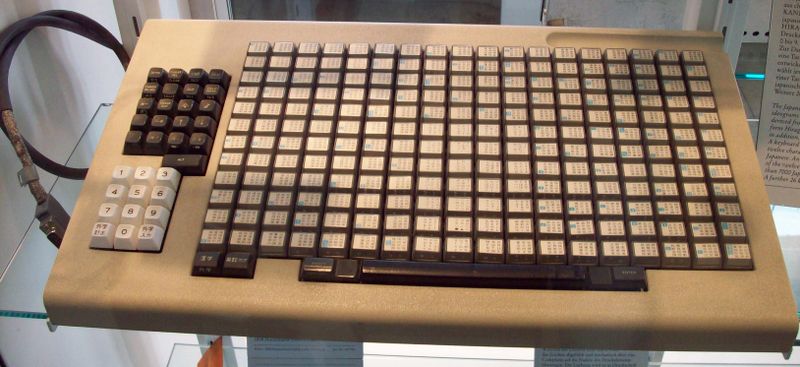Oct 16, 2020
How to Input Japanese on a computer
I’m so grateful for my computer when it comes to writing Japanese. Although I’m a strong reader, having passed JLPT 2 a few years ago, and spend a lot of time reading Japanese, which increases my kanji knowledge, I struggle terribly with writing. Every day, either on my smartphone or on my laptop, I frequently write in Japanese.
My laptop is a bit quirky and throws off many people who see me working and writing. The laptop is a reconditioned computer from an Akihabara shop. The laptop originally had a Japanese version of Windows and has a Japanese keyboard layout. However, when I got it, an English version of Windows was installed, and I’ve continued to update it.

Be glad you don't have to use a beast like this anymore! Photo Ogmios
To write Japanese text on it, I use the MS-IME, the input method editor in Windows. It’s easy to install this in Windows 10, and there are simple instructions, here. I’ve also installed it on the Mac I use at work. Here are simple instructions on how to do that. On either computer, I use romaji as my input method. It works well enough for me.
Quirks of Japanese input methods
This autumn, Japan conducted Census 2020, a statistical done every five years. I told you about how easy it is to complete the survey online. But wait, not so fast. The census package I received indicated a login, password, and key to start the process. When I opened the website, I realized that it requires half-width input. This is an artifact of the bad old days when early computer software and hardware didn’t accommodate Japanese kana and kanji input. Japan produced an industrial standard that could encode Japanese characters, and this standard is still in limited use. Don’t let this deter you from completing the census online. One way to get half-width characters is a converter. I use this converter on the rare occasions I need half-width characters.
How to get all the variant characters
On social media, I see Japanese correspondents use all kinds of cool characters. So, how do I get them, too? If you frequently use the Japanese IME with romaji input, you know that to get variant characters such as the small tsu, you just type in the romaji equivalent and the computer figures it out for you. Kanji comes up when you input a word, and you simply hit the spacebar, select the kanji or kana, hit return, and keep typing.
But what about little stuff? Some of my correspondents write things like 「あらぁ」or 「ねぇ」. I learned that it’s easy to get these tiny characters by simply typing in xa or la. Ta-dah! Tiny characters appear.
Don’t be stumped by variants
A Japanese friend likes to post with proverbs and sutra verses that contain obsolete characters. If you need them, they’re easy to type. The old character 「ゑ」we appears when you type in we.
However, a commonly used character such as 「づ」zu, doesn’t come up when you type in zu. IME expects you to type in du. Similarly, to get「ぢ」you must type in di.
I got a lot more tips from this resource, too. No more head-scratching when I’m inputting Japanese characters.



0 Comments